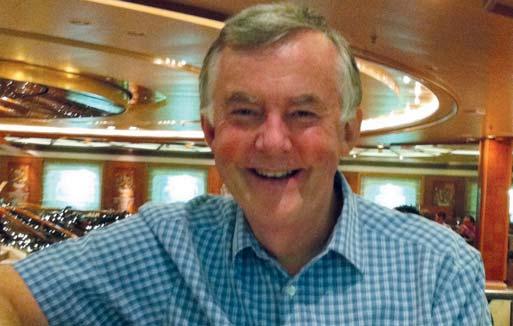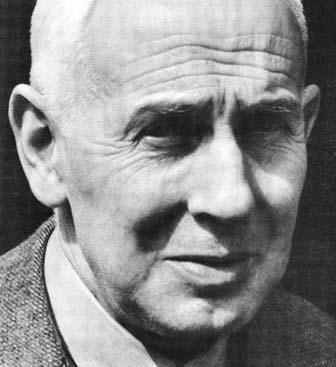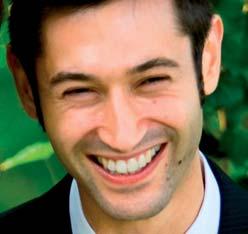
7 minute read
ONA Update
from ONA 86
his wife on their circumnavigation under sail. They started before us and finished after, does it matter who was first, or maybe there are other longdistance sailors out there? My wife Anne and I bought our 42ft Hallberg Rassy sailing boat in 2001, left work in September and left UK in October crossing the Bay of Biscay to Spain, then on to Madeira, the Canaries and the trade wind route to the Caribbean, arriving there in time for Christmas. We soon tired of the tourist filled palm-fringed beaches but spent more time travelling to Venezuela, the ABC Islands, Haiti, Jamaica, Cuba on to the Yucatan, Mexico, Belize and holed up for the hurricane season in the Rio Dulce in Guatemala. The following season saw us sailing down to Panama, exploring the stunning San Blas Islands before transiting the Panama Canal. Anchored overnight the boat was struck by a bolt of lightning with severe consequences, destroying all our electronic equipment and most of the electrics. We limped in to Panama where we spent the next ten weeks working 12 hours a day to repair the damage. In 2003 we were (nearly) ready and set off into the Pacific Ocean to visit the Galapagos –just amazing –on to the Marquesas followed by the Tuamotos then to Tahiti and Polynesia. After a brief return home we returned to the delights of the South Pacific –Samoa, Tonga and Fiji, then down to New Zealand for a re-fit, particularly needed as we lost the rudder 100 miles out. In 2004 we set off homewards via Vanuatu and Papua New Guinea then across the barren north of Australia to Join us on Facebook There are plenty of Old Novos Facebook groups around, but we have our own group. Join us by becoming a fan of
More Old Novos Around the World
Advertisement
By Brian Lowrie (54-65)
Well done Ian Gatenby (50-61) and
the Old Novocastrians Association page on Facebook. Darwin. There we faced the big decision –should we go the shorter route via the Suez Canal with the risks of pirate attack, or the longer, rougher Indian Ocean? We chose the latter and set off for Cocos Keeling and a boisterous 3,000 miles to Durban, South Africa, via Mauritius and Reunion, then worked our way down the coast to Cape Town. In 2005 we entered the South Atlantic, visited St Helena and arrived in Brazil in time for carnival, staying for a month before making the long fetch home via the Azores.
In all 40,000 miles, 40 countries and a wonderful experience. Unlike Ian Gatenby we experienced some severe winds in the Atlantic, Indian and Pacific Oceans but the boat stood up to them. We sold that boat, but being boatless was not for us so we now keep another, Spirit of Zoya, on the far North West coast of Scotland, the best cruising ground in the world –if not always the best weather!
ON Luncheon Club
The ON Luncheon Club still functions, meeting on the last Friday of every month (except July, August and civilised surroundings of the Northern Counties Club, on Hood Street.
The contact is Peter Magnay (55-66) 0191 488 7459, who will be delighted to hear from you.
Promenade Concert
The 2012 Jesmond Community Festival began with a Promenade Concert at the RGS Performing Arts Centre, moving to the School Main Hall. The concert opened with Puccini’s Crisantemi, followed by Handel’s Water Music. The second part was an ambitious performance of Gabriel Fauré’s Requiem, notable for the School Choir of more than fifty accompanied by Brian Varley (5563) playing the school organ, which is benefiting from an ongoing programme of refurbishment. Many ONs will recall this iconic instrument in daily use throughout their school years and it is due to the persistence and December), in the very pleasant
and passion of Mike Barlow (53-64) that the organ was ready for this performance.
The whole evening was a magnificent swan song for Neal Parker, Head of Performing Arts and Director of Music since 1999. After almost 13 years, Neal has moved on to take up a deputy head role at the Grammar School at Leeds.
ONA Membership – Standing Orders If you still have a standing order set up to pay the ONA subscription fee, please cancel it as soon as possible. ONA membership is FREE to all Old Novos and former members of staff.
The Three Ls: Latin, Learning and Libraries at the RGS
In December 2011, through the good offices of Alex Fotheringham (50-58), the School was given first refusal on a manuscript he was offering for sale, Catalogus Librorum Scholaepublicae Novocastrensis, Dec. 20 1709 or, in plain English, a catalogue of books in our school library from 1709. The School immediately agreed to pay half the cost of acquiring the manuscript and a small group of enthusiastic ONs, backed by the ONA Committee, provided moral support and a promise of raising the remaining funds. By April this year there was enough money to buy the catalogue which now becomes the second oldest document in the School Archive.
The catalogue was the work of Thomas Rud, headmaster of the grammar school (1699-1709). The books are listed according to size in his fine hand. This was a painstaking task undertaken by a scholar and bibliophile. What sort of books were in the early eighteenth century library? Stock included Bibles in Latin, the literature of the classical Greek and Roman world, patristic writings and renaissance texts, such as Erasmus’s Adages. The books in the library reflected the rigid classical curriculum of the eighteenth century grammar school, whose principal function was to teach pupils to speak, read and write Latin. Indeed Rud himself was the author of a book on Latin grammar and prose composition used by pupils at this school. Some of the books in the catalogue were set texts. Cicero’s Letters, for example, were a staple of the fourth form Latin course. Yet, as Richard Tuck (56-66) notes in the school history, the Library ‘represents not so much a collection of textbooks for lower forms as a scholarly library for upper forms and for the masters’.
The manuscript is more than just an index of books; it bears witness to later loans and gifts. There is some nice human detail. Then as now, the life of a library book could be precarious. In 1709 the Reverend Robert Thomlinson borrowed volumes by St. Basil and St Gregory of Nyssa for life. In return ‘I do promise at my death to give the Schole Library the entire works by both these authors.’ His promise was never redeemed but Edmund Lodge, headmaster of the school 1715-38, records that at least the two books he had originally borrowed were returned on August 13th 1737. I suspect our current Librarian would not tolerate a 28-year loan!
Rud compiled the catalogue prior to leaving Newcastle in 1709. The document testifies to his love of books. On his appointment as Headmaster, he had set about organising the Library and he oversaw the uniform rebinding of many volumes. The RGS may have been a provincial grammar school but it owned a rich library, confirming its pedigree as a genuine centre of learning. The scholarly Rud was subsequently appointed librarian to the Dean and Chapter at Durham and spent his later years producing a catalogue of the manuscripts belonging to Durham Cathedral.
Our catalogue will now be sent to Tyne and Wear Archives where conservators will undertake some modest repair work. A facsimile will be put on display in the School Library while the original will remain in the Archive. There will, however, be an opportunity to see the original on RGS Day 2013 as part of a small Archives Exhibition.
It is now fashionable to give libraries names like Learning Resource Centres. We still call our library by its traditional name and, happily, in an increasingly digital era it still houses large numbers of printed books, just as it did in 1709 and, now as then, it is well used by students and teachers alike. We are delighted to own the catalogue and to have laid claim to a piece of our heritage. Richard Sharp (60-71) puts it well. It will serve as a reminder to ‘present and future generations at the RGS that they are heirs to a noble tradition of humane learning.’ The thread of scholarship runs continuously through the history of our great school.
The School would like to thank the following donors whose generosity made it possible for us to buy the 1709 Catalogus Librorum: ONA Committee, Steve Lawson (53-64), Richard Sharp (60-71), Professor Richard Tuck (56-66) and Chris Calver (60-71).
Oliver Edwards School Archivist

The 1709 library catalogue.







